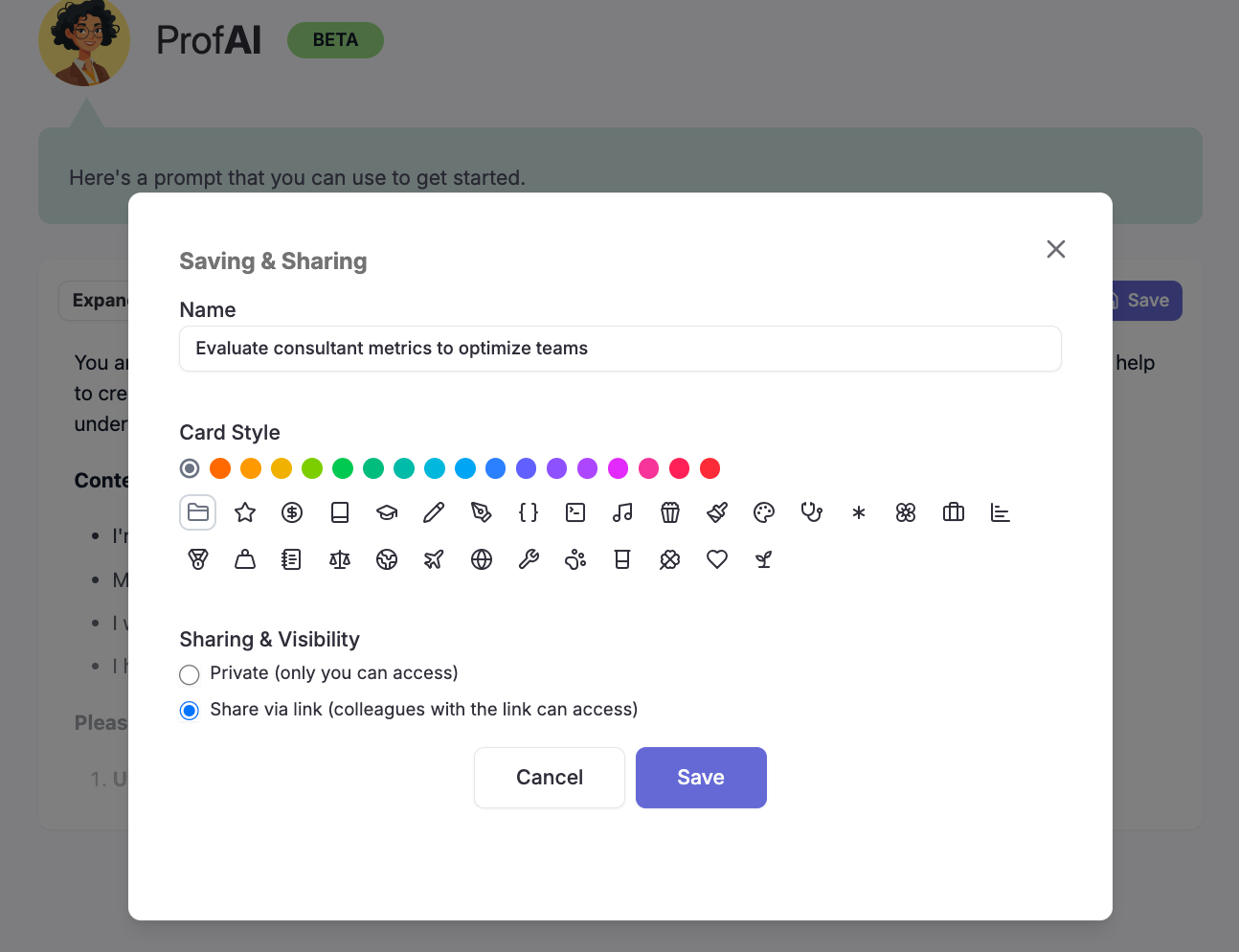I recently hosted an executive AI workshop where the CEO bragged that he was all-in on AI. Two minutes later, he said he mainly uses it to plan personal travel.
We’re coming up on 3 years since ChatGPT was released, and this is the dirty secret of enterprise AI: only 10% of AI users have ROI-generating use cases. The rest are using it to rewrite email, fix small errors in code, or summarize documents. Those use cases might be a win for the employee, but they don’t drive meaningful productivity gains for the organization. More likely, the employee uses AI to get their work done faster, then walk the dog.
This is why you might hear that people are using AI at your company, but perceive very little change in your business operations, growth, or headcount requests. And if we’re going to get to AI ROI, we need to get out of the AI Use Case Desert first.
The equation that drives AI ROI
For the last year, I’ve been saying that to get to AI ROI, you need to get 80% of your workforce using AI every day. I still think that’s true - but it’s missing a critical component.
You need 80% of your workforce using AI every day for ROI-generating use cases. Not recapping a meeting or (even worse) compiling a grocery list.
I define “ROI-generating use case” as a use case that allows the employee to significantly impact a metric that drives revenue or margins. If AI helps an employee book 2x as many first calls, and 30% of first calls result in closed won deals, that’s clearly an ROI-driving use case. If a use case allows an employee to serve 2x more customers without adding headcount, same deal.
Why most AI use cases don’t drive ROI
So why are so many of us lacking this type of use case? In my opinion it comes down to a few things.
1. Many employees don’t actively consider how their everyday work drives ROI. The majority of our workdays are spent checking tasks off lists - sending emails, approving blog posts, parsing data.
If you’re in sales, you probably see the connection between your work and business revenue, because you’re compensated for it. But most employees aren’t set up to think this way - “If I do X more efficiently or more scalably, the business makes more money or spends less money.”
2. AI use cases are highly specific to the individual employee. To implement an ROI-generating use case, you need a LOT of context on the employee’s work. What do they spend their time doing that could be done more efficiently? What tasks drive business growth that could be expanded? This goes way beyond “use AI to write a marketing plan” - so it’s very hard to train large groups of people on it.
3. This type of use case is HARD. Using AI to scale human work is difficult - it requires a level of automation that goes beyond individual prompting in ChatGPT. Let me give you an example from my own marketing team. They started by using AI to generate consumer emails, by writing some context on each course, sending to ChatGPT, then copy-pasting the results into a doc. That may have saved them 15 minutes at a time, but wasn’t driving real business value.
Then they built an automation that flags when a course is 1 month out, reads the course materials, writes the email, and sends it for review in Slack - enabling us to A/B test different variants and scale consumer sales without much human effort. That drives ROI - but it took a lot of testing to get right.
You can’t “workshop” your way out of this problem
The Head of AI is facing an enormous challenge with AI. They need to train thousands of people to find these ROI-generating use cases, and they have an old playbook: 1:1 coaching, repeat workshops, and lunch and learns.
Clearly that’s not going to work. You can’t sit down with 1,000 people and dissect their work to this level - let alone teach them how to build automations that drive ROI.
So how do you scale personally relevant AI use case discovery to thousands of employees? With AI.
This week we launched the most exciting product update in Section’s history – and maybe in the entire AI enablement space. ProfAI’s Use Case Coach learns the user’s role, then recommends use cases that fit their specific job.

It personalizes the use case by asking a series of questions about what the user is trying to accomplish – a very helpful exercise, given that we don’t always know why we’re doing something.

And it leaves the user with an action plan and a prompt they can import directly into ChatGPT, Copilot, or other LLMs.

Users can share their use cases with each other and seed your company Use Case Library, turning individual discovery into organizational knowledge.

And you - the AI leader - get metrics on which use cases are being developed, shared, and re-used across the org.

Why is this such a big deal? Because it harnesses the power of AI to solve the EXACT problem that AI poses - we don’t totally grasp the impact of our own work, so we don’t understand how to use AI to accelerate it, and we can’t be trained 1:1 by a busy Head of AI with other priorities.
I believe ProfAI is the only way to scale this kind of AI discovery to an organization.
It’s how we’ll get millions of people to use AI to accelerate their impact at work, and do more with AI than they imagined possible.
Every enterprise AI leader should be in this platform. Email me, let’s get started - greg@sectionai.com









